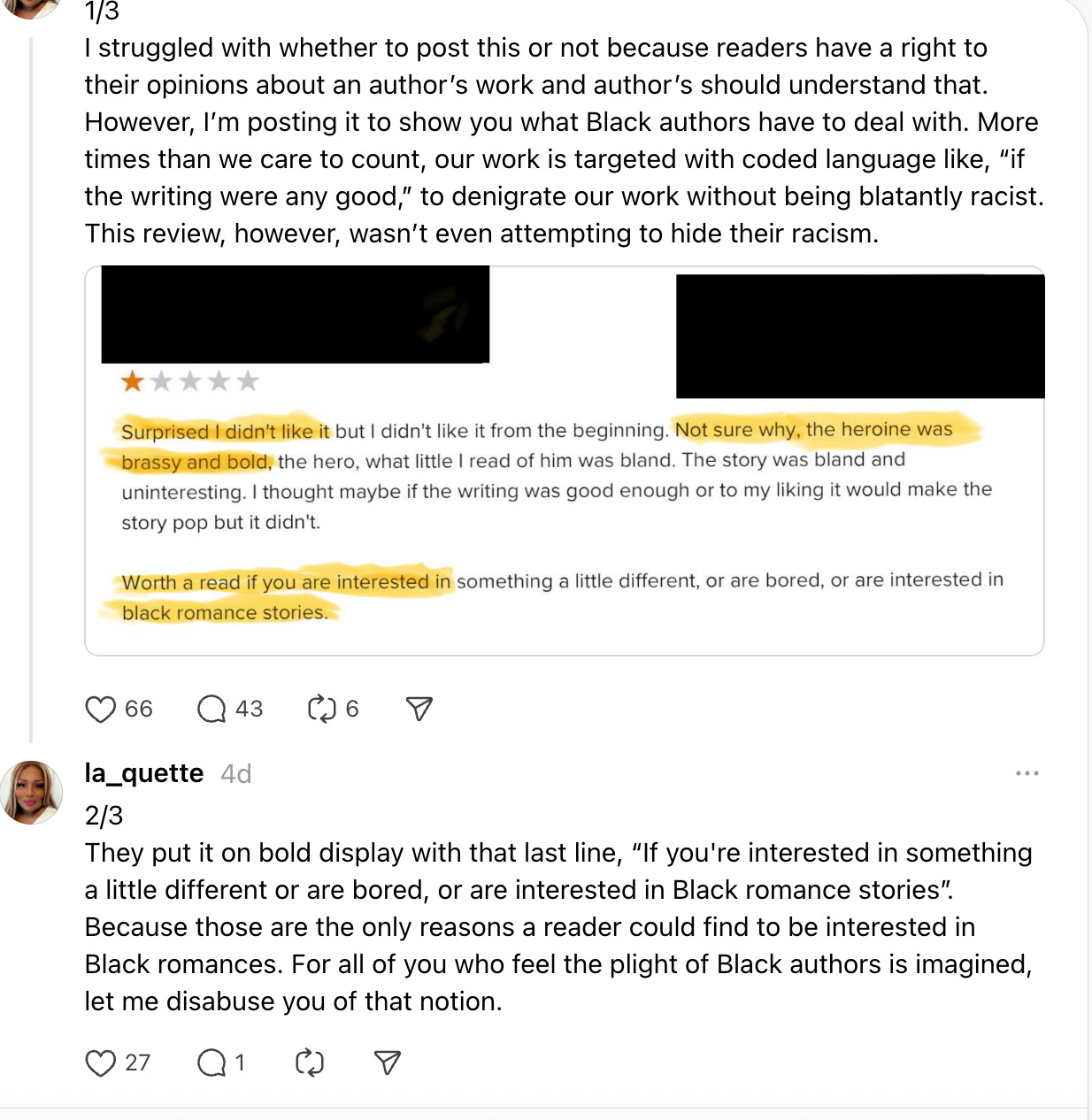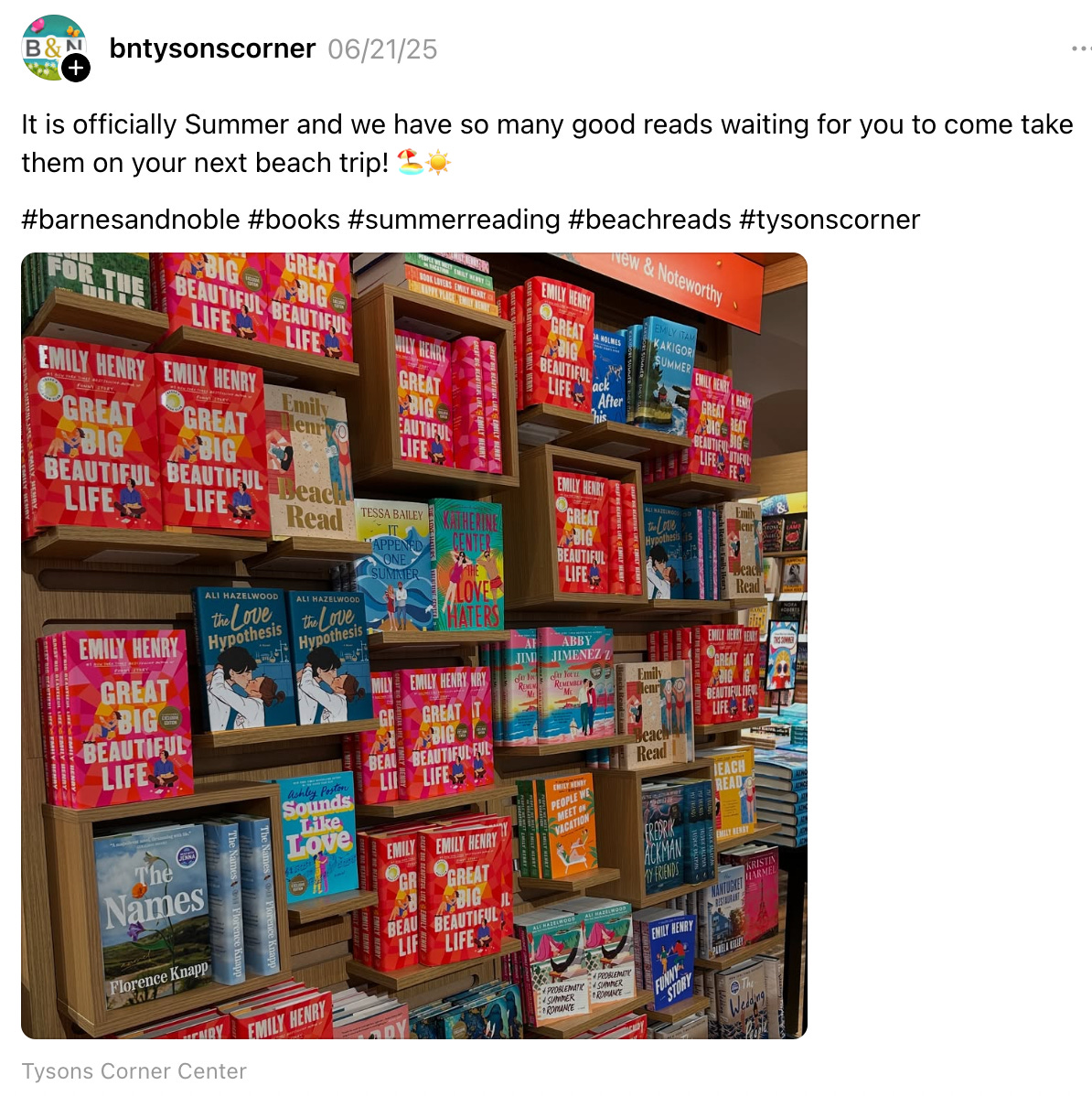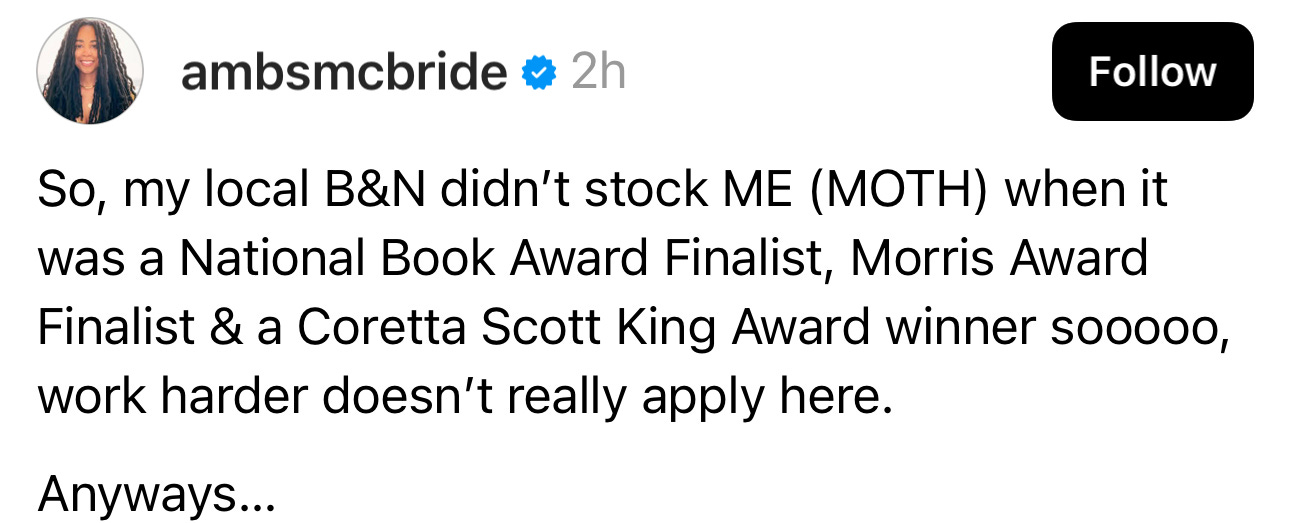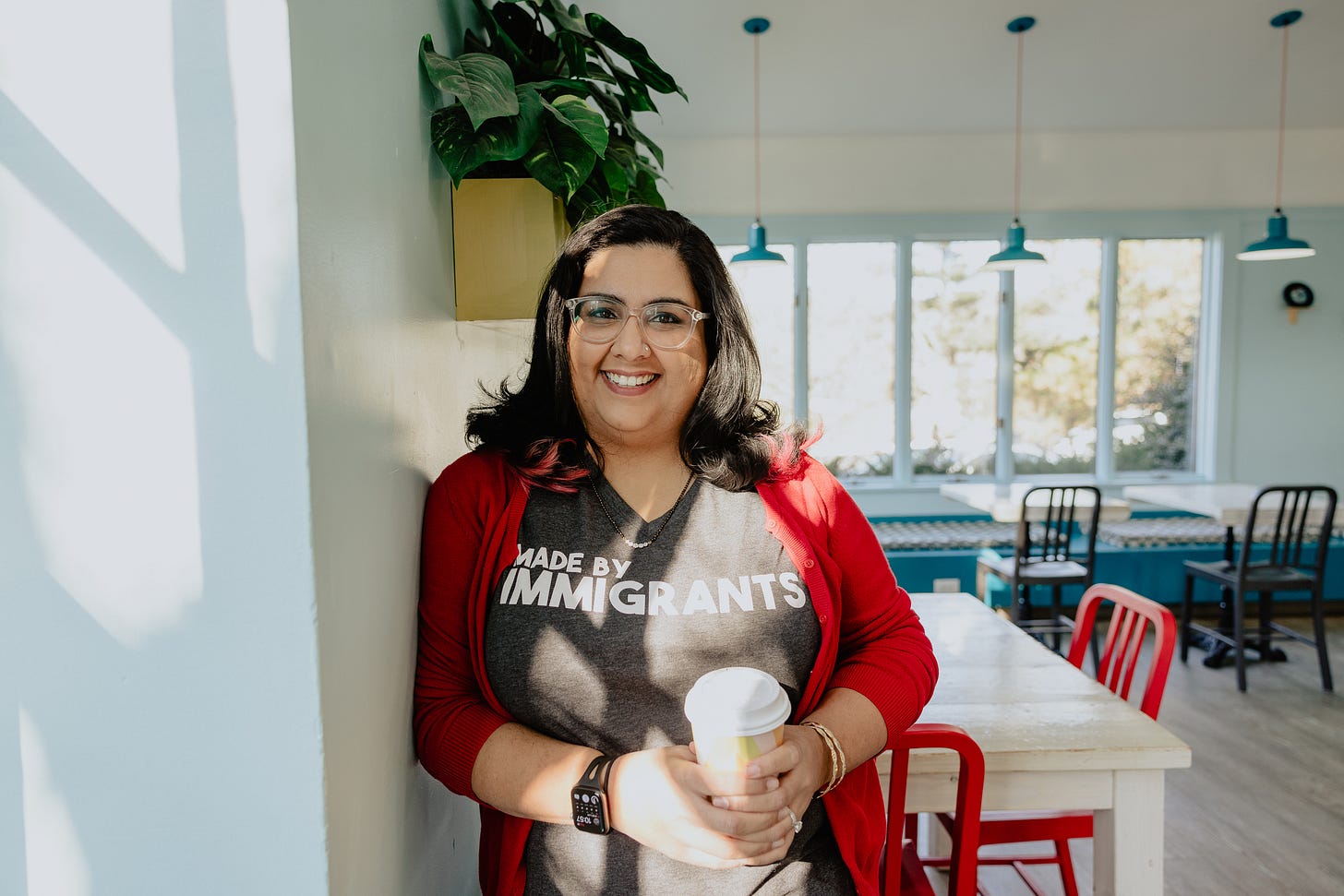Part 2 of DEI/Publishing Series: Like it's hard?
Reading diversely is actually as difficult as people say it is, but not for the reasons you might think.
I don’t know what’s wrong with my FYPs lately, but even the people I follow, the ones who had made a show of reading so diversely a few years ago, are now showing stacks of books with almost zero marginalized community representation. It’s…disappointing.
I normally scroll on, and focus on supporting the creators who DO try their best to showcase books by and about marginalized communities, but it’s been really getting to me.
Then, I saw Bookshop.org post this on their Threads account.
My gut reaction was, YESSS.
And then I recoiled with, UMMM, WELL, ACTUALLY.
Let’s talk about why reading diversely is actually difficult. I’m not going to make the case for why we should read diversely because I think that’s a given. However, if you need a refresher, I’ll refer you to Rudine Sims Bishop.
What does ‘reading diversely’ really mean?
The word ‘diverse’ means variety, or in this context, a range of different identities and intersectional backgrounds. If you are ‘reading diversely’ you are being intentional in choosing the books you consume to ensure that the authors and/or content is representative of a wide range of these backgrounds, specifically those who are underrepresented in publishing. Some examples include:
Race
Ethnicity
Gender
Sexuality
Disability
Socio-economic status
Other backgrounds include religious diversity, age, and/or fat representation.
To read diversely, you must evaluate your TBRs, your monthly reading wrap ups, your library holds, your Storygraph or Goodreads ratings, your Netgalley requests, your favorited TikTok videos, the books in your Bookshop.org shopping cart, the books you touch as you navigate a bookstore, and ask yourself honestly: am I reading books by and about marginalized authors or marginalized communities that are different from my own identity/community? How often am I doing this, and is it enough?'
There are two major hurdles that I see as front and center for avoiding reading diversely: accountability and access.
Part 1: let’s start with accountability.
Sometimes, reading diversely is hard work because people have to think critically about language, social context, and conflicts that they may not have come across before. Educators are conducting studies about the importance of developing reading comprehension in grade school so that students are armed with the skill to approach texts and develop meaning even if the texts aren’t about people like them.
But guess what? Many readers don’t care to hone this skill or even use it. As humans, it’s natural to gravitate towards safety, towards the known and the comfortable. In short: its natural to be an asshole.
In romance, there is an ongoing conversation about self-insertion, too, especially after the CharacterAI debacle. (I would encourage you to go to social media and do a search for this if you’re interested. I don’t want to give CAI any more attention by linking it directly here.)
For safety, and for self insertion, readers are reaching for non-diverse books because that’s what they know. Even readers of color are doing this, because the world we live in is designed for and by straight white men, and readers of color can navigate this world as deftly as white readers.
But you can’t ostrich if you want to read diversely. If you do, you’ll never develop the cultural reading comprehension skills you need to consume marginalized stories. Then, when you pick up the one-off book by a marginalized author once a month, the experience will feel different than the rest of your reading. Cumbersome even. And that impacts the author.
To make my point, I’m about to do something that may or may not backfire on me since I’m crossing the line into reader spaces (DON’T DO THIS, AUTHORS), but I feel like it illustrates what I’m trying to say.
I saw that LaQuette shared a review she received of an upcoming book on Threads and discusses the way that black women and stories are perceived differently.
This reviewer is obviously leaning into racism, and its clear that they don’t respect Black romances. What happens next? Here are a few possibilities:
Bookstores can see this and it may influence a buyer’s interest in the book
Other readers who don’t normally read diversely will see this, too and decide that reading ‘black romances’ feels like its ‘not for them’
Librarians may also see this and based on oppressive conservative/right wing pushback, may avoid the title to save themselves from potential criticism
I wanted to see if I had similar engagement with my YA fantasy, Illusions of Fire. I was warned I would from other South Asian fantasy writers who have faced similar ridicule in the past, but I had the check for myself. Here’s what they look like:
I’m not going to argue with whether or not these are valid complaints, because they are, I’m the author and obviously biased, and frankly, this is reader business. The reason why I’m sharing is because valid or not, I want you to ask yourself if you’ve seen reviews like this on books with Greek, Irish, Norse, Celtic, Roman mythology and with such frequency? I can guarantee that many readers aren’t familiar with all aspects of those myths either. But this aversion to try and connect or understand and explore myth from Eastern cultures is rampant in BIPOC fantasy.
I suggest you check out some of your favorite BIPOC fantasy books and walk through some of the 1-2 star reviews for additional context.
Last example: When DATING DR. DIL came out, I received hate mail from white women. Just 2 letters that were sent directly to my inbox. (BIPOC authors receiving hate mail is NOT new at all. You can ask any of us and we’ll tell you how frequently it happens). One of the messages was pretty clear in accusing me of hating white people and this country because I didn’t have white people in my novel. (I KID YOU NOT)
Here is the bottom line:
Readers have to get comfortable with being uncomfortable and accept that they can enjoy stories where they aren’t the center of attention. Marginalized stories may not be about people like you, and that’s okay. I promise you that you can still enjoy yourself.
I can also go on for an undetermined length of time about how BIPOC books have been positioned by publishers as a tool to ‘teach’ diversity, which is absolute bullshit, but that’s a lecture for another day. Cliff notes version is that readers have to stop thinking that understanding culture is a homework assignment. Reading should be an experience, a joyous adventure that builds empathy and sparks curiosity. Learning can be a part of the process, but romance books by BIPOC authors in particular aren’t an instructional aid.
I share all of this only to say that there is no way for us to hold readers accountable. We are our own judge, jury, warden when it comes to reading diversely and we’ve gone on far too long with accepting ostrich behavior.
Part 2: Access is a a major problem.
In fact, it may be more of a problem than accountability.
Legal Access.
Let’s start with the obvious. On June 27th, the Supreme Court decided in Mahmoud v. Taylor that MD school districts could opt their children out of engaging with books that have LGBTQ content citing religious freedom as their reasoning. This is a devastating blow to the LGBTQ community, and limits access to children who may desperately need to see themselves in these stories, but whose parents are using their religious bigotry as a weapon.
Philadelphia based author Katherine Locke and member of the Authors Against Book Bans team, and Philadelphia chapter of AABB wrote a really eloquent reaction on their Instagram about this.
Then there are libraries that have funding cuts at an exponential rate.
I don’t need to tell you how harmful book banning is as well. How libraries, universities, schools, and even bookstores or retail giants are responding with ‘predictive obedience’ by banning or limiting books in an effort to avoid conflict with right wing conservatives.
If you want to know more about the impact of library funding cuts, you should absolutely follow TomesandTextiles on Instagram and TikTok.
Publisher Tomfoolery.
Marginalized authors are faced with publishers who gaslight them into believing that the books aren’t good enough when in reality, the publishers aren’t good at selling books by marginalized authors.
Kennedy Ryan did an interview with Elle Magazine where she talks about how people will ask the question “Why don’t Black books sell?” Her response was “No, you don’t know how to sell Black books.”
I remember having conversations with a marketing exec at a publisher who was so good at gaslighting authors of color into believing that they were doing everything they could for the title. If a book wasn’t getting shelf space, then they’d imply the book just wasn’t good enough. Here’s the thing: authors all talk to each other so we know what we’re each being offered. Booksellers talk to us and know when marketing execs approach them with new titles for the season and how few of those titles are by authors of color. We called bullshit on this exec so often we even had a group chat about it.
If Publishers (specifically sales teams and marketing/PR teams) stopped trying to pitch marginalized authors the same way they pitch non-marginalized stories, then access wouldn’t be as big of a problem (I think).
I’ve talked about this plenty of times before, but I spent over 18k of my own money to help promote Dating Dr. Dil. We went above and beyond what my publisher committed to doing, and for that book, my in house PR person Jes was amazing because she LISTENED to me.
You can’t do the bare minimum or use a cookie cutter marketing/pr plan and expect equal impact.
This is like infinity stones: you have to have all of the pieces in place to make tremendous change, but that doesn’t mean changing publisher tomfoolery can’t move the needle.
One solution for publishers is re-investing some of those big advance dollars they spend on indie books published eight years ago into marketing and PR campaigns, and ad placement that connects with global audiences.
Garner the support of libraries, book clubs, retail spaces, and more. Publishers should start thinking creatively, and executives and sales teams need to stop putting up road blocks.
Then you have the bookstores.
Barnes & Noble, stop being an asshole and get your shit together.
The Tyson’s Corner BN shared this image on Threads and the comments ranged from ‘Sounds about White,’ to ‘Tyson’s Corner? That community is so diverse, and the best you can offer them are the same five authors?’
My response was: I love some of these authors. They are my friends. But even they would raise a brow at this display.
Amber McBride (Yes, THE Amber McBride) recently shared a message on Threads about how people are unable to buy MOTH because it isn’t available in her local BN store. Guess what? It’s not available in mine, either. It may have come out years ago, but this is a critically acclaimed novel we’re talking about.
I’m curious how her 2025 release will do based on the way her backlist is currently treated.
Then author Shanora WIlliams talked about how her book came out and wasn’t available in a bookstore within a 100 mile radius from her home.
I’ve also done some of my own due diligence, after fans of Kennedy Ryan complained that there weren’t any copies at their local stores, Susan Lee’s book was also absent from many retail locations, and Danica Nava wasn’t being stocked in store, either.
A lot of books used to move through Target, and we all know how that’s going. Large retailers supporting diverse communities still prefer to white wash their shelves. The last time I was in a Target before the boycott, I counted three books by marginalized authors on an entire row of bookshelves. THREE. Kennedy Ryan, Ana Huang and Casey McQuiston.
I’m just talking about retail space right now, but there are also additional conversations about book visibility in online spaces.That’s also a hurdle that you should be mindful of. I’m talking social media algorithms that suppress videos with black and brown book covers, or platforms where “fact checking” software flags authors who talk about their books.
So, what do we do about accountability and access?
If you care about the bookish community, at all, then it’s your responsibility to try and do better. Here are a few things to keep in mind.
Library funding is a problem. Libraries are incredible spaces for marginalized communities to access books. Go support your local library in any and every way you possibly can.
Go to your local school board and fight for books that are on the chopping block! I follow Rachel Hannah (rachelwithreads) on TikTok who is constantly fighting against book banning in Hillsborough County, Florida. She is an example of literary citizenship.
If you are an author: ask your publisher what they’re doing to support the access and distribution of books by marginalized authors. Just ask the question every quarter. “Hey, team. What are we doing to amplify marginalized authors? Can I add marginalized authors as my convo partner on my book tour? Instead of just making lists during heritage months, is there a way we can lead some reading challenges?”
If you are an influencer: ask your contact at publishers what they’re doing to support the access and distribution of books by marginalized authors. “Hey, are you prioritizing readers from marginalized backgrounds when distributing Netgalley arcs? Are you sending book boxes or inviting influencers from marginalized backgrounds to your events? Is there a reading guide, a book club guide, an author chat, marketing material etc that I can share?”
If you are a bookseller at an indie bookstore: please, please, please consider reserving table displays and end caps for books by marginalized authors. I swear to you, readers know where to find my girl Emily Henry, or Abby Jimenez, or Elise Silver, or my friends Ali Hazelwood and Hannah Grace and Tessa Bailey. Readers will pick them up regardless. They don’t have to be front and center. You know who does? Authors like Regina Black who has a book coming out this month (AUGUST LANE) that is SO INCREDIBLE and not getting the attention it deserves.
Lastly, readers: do an assessment of your reading, of your online presence, and think about the way you talk about marginalized stories. Think about consuming more and being comfortable with feeling uncomfortable when your identity isn’t front and center.
I strongly believe that literary citizenship can solve so many problems in the bookish community. Not all, but many. If we trust and love and support each other by amplifying marginalized voices and celebrating our differences, then that’s half the battle.
All you have to do is…read more diverse books. Okay, if I put it that way, maybe it is just that simple.
Thanks for coming to my TedTalk,
Nisha
P.S. I have a book coming out Oct 7! At ALA, someone told me it was Percy Jackson with romance, since no one was getting my millennial Buffy the Vampire Slayer reference. I hope you like it!
ILLUSIONS OF FIRE: Pre-order for swag and stay tuned in for some awesome book tour news next month.
Also, THE KARMA MAP (my roadtrip summer romance in India) is on sale this month! The e-book is $2.49 in US/CAN. You can check that out here!











As a B&N bookseller, I can attest that it’s both top down and at store level. It’s infuriating. Booksellers can try, and we get shut down hard- even when half my store’s customer base is Black and Latine. I managed to push through and get three (three!) copies of Nisha Tuli’s Not Safe for Work and sold them all in a week. Now I’m not being allowed to order more in???? I can only get one copy of Danica’s Love is a War Song?
Something is fishy.
Accountability is so important—we can't put reading or publishing books on autopilot. I really appreciated your #23for23 initiative from Steamy Lit Con, so I've been keeping it going every year! Being intentional about our media consumption can also be lots of fun :)